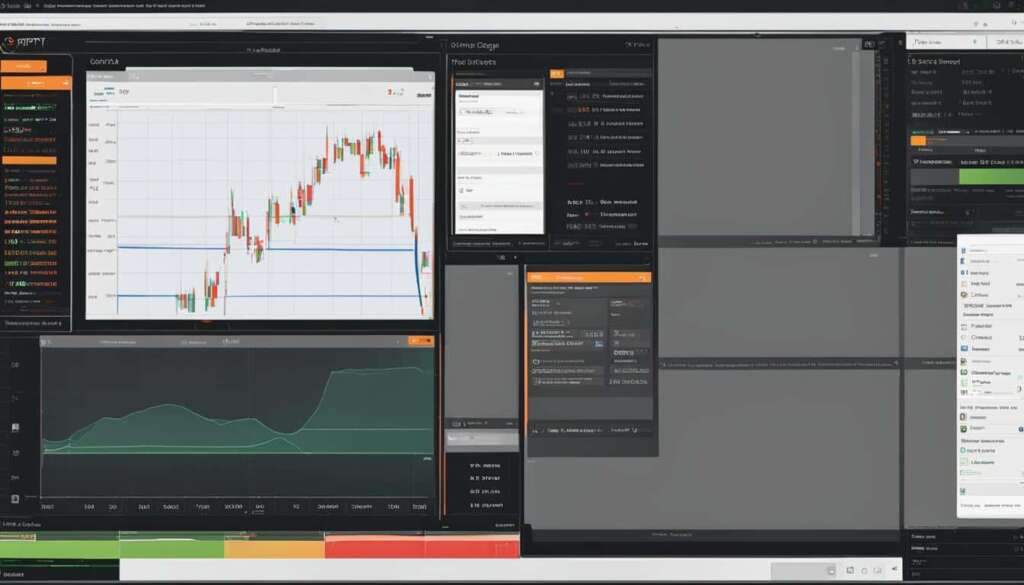Table of Contents
In order to achieve optimal performance with ChatGPT, it is essential to have a comprehensive understanding of the fine-tuning process. This guide will provide step-by-step instructions on how to fine-tune ChatGPT, allowing you to unlock the full potential of this powerful AI model for enhanced interaction quality.
By following the best practices outlined in this guide, you’ll learn how to fine-tune ChatGPT to deliver better results. Whether you’re looking to improve AI interaction in customer service or any other application, this guide has got you covered.
Throughout this guide, we will explore various aspects of fine-tuning, including writing better prompts, utilising computational resources efficiently, improving the quality of training data, experimenting with model parameters, and staying up-to-date with the latest ChatGPT updates and enhancements.
Optimising ChatGPT’s performance is a multi-step process that requires attention to detail and an understanding of AI principles. With this guide, you’ll be equipped with the knowledge and tools needed to fine-tune ChatGPT effectively, ensuring that it performs optimally for your specific needs.
Writing Better Prompts for ChatGPT
One of the key factors in optimising ChatGPT’s performance is writing good prompts. By crafting effective prompts, users can enhance the quality and relevance of ChatGPT’s responses. Here are some essential guidelines for writing better prompts:
Addressing the “Who,” “What,” and “How” Questions
When creating prompts, it’s important to address the “Who,” “What,” and “How” questions to provide clear directives for the AI model. By specifying the intended audience, the desired topic or task, and the approach or format required, users can guide ChatGPT towards generating more accurate and relevant responses.
Developing a Clear Persona and Objective
By developing a clear persona and objective in prompts, users can effectively communicate the desired tone, style, and perspective to ChatGPT. Whether it’s adopting a formal or informal tone, sounding like a subject matter expert or a friendly assistant, or achieving a specific outcome, clearly defining the persona and objective helps the model tailor its responses accordingly.
Defining the Ideal Outcome
Guiding ChatGPT towards the ideal outcome is crucial for optimising its performance. By providing explicit instructions on the expected response format, level of detail, or even specific information to include or exclude, users can influence the generated responses to better meet their requirements.
“Prompt: As a marketing consultant, provide three strategies to boost sales for an e-commerce business.”
By following these guidelines, users can ensure that the prompts they provide to ChatGPT are clear, specific, and focused on achieving the desired objectives. This empowers the model to generate responses that are more relevant and valuable.
Utilising Computational Resources
Optimising computational resources is crucial for maximising the performance of ChatGPT and improving its overall efficiency. By following these tips and best practices, you can ensure that ChatGPT performs at its best and delivers faster and more efficient responses.
Choose the Right Hardware
Selecting the appropriate hardware is a critical step in optimising computational resources for ChatGPT. Consider factors such as the processing power, memory capacity, and GPU capabilities of your hardware. Investing in powerful hardware can significantly enhance the model’s performance and speed up both training and inference times.
Use Resources Efficiently
Efficient resource usage is key to making the most of your computational power. Avoid running unnecessary processes or applications in the background while training or running ChatGPT. This will free up system resources and allow ChatGPT to utilise the available computational power to its fullest potential.
Parallelise Tasks
Parallelising tasks can help reduce both training and inference time, further optimising the use of computational resources. By distributing the workload across multiple processors or GPUs, you can accelerate the model’s performance and achieve faster responses. Implementing parallel computing frameworks, such as PyTorch DataParallel or TensorFlow MirroredStrategy, can streamline the parallelisation process.
“Optimising computational resources is crucial for maximising the performance of ChatGPT. By following these tips and best practices, you can ensure that ChatGPT performs at its best and delivers faster and more efficient responses.”
Efficiently utilising computational resources is essential for improving ChatGPT performance. By selecting the right hardware, using resources efficiently, and parallelising tasks, you can optimise the model’s performance and achieve faster and more accurate responses. The following table summarises the key tips for maximising computational resources:
| Tip | Description |
|---|---|
| Choose the Right Hardware | Select hardware with sufficient processing power, memory capacity, and GPU capabilities to support ChatGPT’s computational requirements. |
| Use Resources Efficiently | Avoid running unnecessary processes or applications in the background to maximise available computational power. |
| Parallelise Tasks | Distribute the workload across multiple processors or GPUs to reduce training and inference time. |
By optimising computational resources, you can unleash the full potential of ChatGPT and achieve improved performance and efficiency.
Fine-tuning ChatGPT
Fine-tuning ChatGPT plays a crucial role in optimising its performance and tailoring it to specific tasks. By using task-specific data and applying appropriate settings during the fine-tuning process, users can enhance ChatGPT’s capabilities. One of the key considerations in fine-tuning ChatGPT is determining the learning rate and the number of epochs.
When fine-tuning ChatGPT, it is essential to use task-specific data relevant to the desired outcome. This helps the model learn and adapt to specific contexts, such as customer service or content generation. By training on data that closely reflects the target use case, ChatGPT can provide more accurate and relevant responses.
Additionally, setting the learning rate and the number of epochs appropriately is vital for effective fine-tuning. The learning rate determines the step size during training and impacts how quickly the model adapts to the data. On the other hand, the number of epochs determines the number of times the model iterates through the training data. Balancing these two parameters ensures an optimal fine-tuning process that maximizes performance.
“Fine-tuning ChatGPT allows for customization to meet specific requirements, whether it’s improving customer support or generating creative content. With the right task-specific data and fine-tuning settings, the model can excel in various domains.”
Moreover, fine-tuning ChatGPT offers several benefits for different applications. In customer service, fine-tuning enables the model to understand customer queries more accurately and provide relevant solutions. For content generation, fine-tuning helps produce coherent and contextually appropriate text. By leveraging the flexibility of fine-tuning, ChatGPT can be fine-tuned to excel in specific tasks and domains.
When fine-tuning ChatGPT, it is important to carefully monitor and evaluate its performance. By testing the fine-tuned model against diverse prompts and real-world scenarios, users can assess its effectiveness. This iterative process of fine-tuning and evaluation allows for continuous improvement and refinement of the model’s performance.
Overall, fine-tuning ChatGPT is a critical step in optimising its performance for specific tasks. By using task-specific data, setting the right learning rate and number of epochs, and continuously evaluating the model’s performance, users can unlock ChatGPT’s full potential and achieve exceptional results.

Improving Training Data Quality
The success of ChatGPT heavily relies on the quality of its training data. Using relevant data, cleaning out irrelevant or redundant information, and ensuring a balanced dataset is essential for enhancing ChatGPT’s understanding and responsiveness to customer needs.
When it comes to improving training data quality, one of the first steps is to carefully select the most relevant and representative data. By curating a dataset that closely aligns with the target domain or application, users can enhance ChatGPT’s ability to generate accurate and contextually appropriate responses.
Data cleaning is another critical aspect of improving training data quality. By identifying and removing irrelevant or redundant information, users can eliminate noise and enhance the signal-to-noise ratio, leading to improved performance. This process involves carefully reviewing and validating the data, ensuring that it aligns with the desired standards and requirements.
“The quality of the data is far more important than the quantity.” – Vincent Muller
In addition to data cleaning, it is important to balance the training data to cover a wide range of interactions. Including diverse examples and scenarios helps ChatGPT to generalize better and handle a broader array of user inputs effectively.
Benefits of Improving Training Data Quality
- Enhanced accuracy: By using relevant data and removing noise, ChatGPT’s responses become more accurate and contextually appropriate.
- Improved relevance: A well-curated dataset ensures that ChatGPT produces responses that align with the desired goals and objectives.
- Enhanced user experience: High-quality training data leads to better interactions and a more satisfying user experience.
Improving training data quality is a crucial step in enhancing ChatGPT’s performance and ensuring its usefulness in various applications. The next section will delve into the process of experimenting with model parameters to further optimize ChatGPT.
Experimenting with Model Parameters
Adjusting model parameters is a crucial aspect of fine-tuning ChatGPT. By experimenting with various parameters, such as temperature, max tokens, and top-p value, users can optimize ChatGPT’s performance and achieve better results.
When adjusting the temperature parameter, users can control the randomness of ChatGPT’s responses. A higher temperature value, such as 0.8, increases the randomness, resulting in more creative and diverse outputs. Conversely, a lower temperature value, like 0.2, reduces randomness and produces more focused and deterministic responses. Experimenting with different temperature settings allows users to find the right balance that aligns with their desired outcomes.
Another parameter that can be adjusted is the max tokens value. This parameter defines the maximum length of the response generated by ChatGPT. By increasing or decreasing the max tokens value, users can control the length of the model’s output. Specific applications may require shorter or longer responses, and fine-tuning this parameter helps achieve the desired response length.
The top p parameter, commonly known as nucleus sampling, helps control the diversity of responses. By adjusting the top p value, users can define the threshold for the probability distribution of words used in the response generation. A higher value, such as 0.9, allows for a larger set of words to be considered, resulting in more diverse outputs. Conversely, a lower value, like 0.3, narrows down the selection of words and produces more focused responses. Experimenting with different top p values enables users to find the optimal balance between diversity and relevance.
“Experimenting with model parameters is crucial in fine-tuning ChatGPT. By adjusting temperature, max tokens, and top p value, users can optimize the model’s performance and enhance the quality of generated responses.”
By iteratively experimenting with these model parameters, users can find the ideal configuration that best suits their specific use cases. It is recommended to fine-tune one parameter at a time while keeping the others constant to observe the effects individually. This iterative process allows for thorough exploration and optimization of ChatGPT’s capabilities.
Additionally, documenting the experimental results and analyzing the performance changes associated with parameter adjustments can provide valuable insights for future optimizations. This data-driven approach helps users make informed decisions and continuously refine ChatGPT’s performance.
Understanding and adjusting model parameters are essential to optimizing ChatGPT’s performance. By experimenting with temperature, max tokens, and top p value, users can strike a balance between randomness, response length, and diversity, unlocking the full potential of ChatGPT for various applications.
Key Takeaways
- Adjusting model parameters is crucial for fine-tuning ChatGPT and improving its performance.
- Experiment with temperature to control the randomness of ChatGPT’s responses. Higher values encourage diversity, while lower values produce more focused outputs.
- The max tokens parameter determines the length of ChatGPT’s responses. Adjust it to achieve the desired response length for specific applications.
- By tweaking the top p value, users can control the diversity of ChatGPT’s responses. Higher values result in more diverse outputs, while lower values drive more focused responses.
- It is recommended to conduct iterative experiments, documenting the results, and analyzing the performance changes associated with parameter adjustments to optimize ChatGPT’s capabilities.
Keeping Up with ChatGPT Updates and Enhancements
OpenAI continuously updates and enhances ChatGPT to improve its performance and capabilities. Staying up-to-date with these updates is crucial for users who want to leverage the advancements and ensure that their ChatGPT model performs optimally.
ChatGPT performance updates are released regularly, addressing various aspects of the model to enhance its responsiveness, accuracy, and natural language understanding. These updates are designed to improve the quality of interactions and provide users with better experiences.
To keep pace with the evolving field of AI and ML research, it is important to stay informed about the latest ChatGPT advancements. By staying up-to-date, users can take advantage of new features, improved algorithms, and optimized performance.
Benefiting from the latest ChatGPT updates:
- Improved Responsiveness: The updates may include enhancements that make ChatGPT response times faster, allowing for smoother and more efficient conversations.
- Enhanced Accuracy: OpenAI constantly refines the model’s training process, enabling ChatGPT to provide more accurate and contextually relevant responses.
- Expanded Capabilities: Updates may introduce new functionalities and enable ChatGPT to handle a wider range of tasks and inquiries, enhancing its versatility.
“Staying up-to-date with ChatGPT updates is essential for unlocking the full potential of the model and staying ahead in the realm of AI-enabled interactions.”
To ensure you are leveraging the latest ChatGPT advancements, regularly check OpenAI’s official website for updates. OpenAI often provides documentation and release notes to help users understand the changes and improvements introduced with each update.
Remember:
- Stay informed: Explore AI and ML research papers, blogs, and forums to keep up with the latest trends and developments in the field.
- Try out new features: Experiment with the new functionalities and capabilities offered by ChatGPT updates to see how they can enhance your specific use cases.
- Provide feedback: If you encounter any issues or have suggestions for further improvements, share your feedback with OpenAI to contribute to the ongoing enhancement process.
By staying up-to-date with ChatGPT updates and leveraging the advancements introduced, users can ensure that their AI model remains at the forefront of performance and interaction quality.
| Benefits of Staying Up-to-Date with ChatGPT Updates | Actions to Stay Current |
|---|---|
| Improved responsiveness | Regularly check OpenAI’s website for updates and release notes. |
| Enhanced accuracy | Explore AI and ML research papers and forums to stay informed. |
| Expanded capabilities | Experiment with the new features and functionalities introduced in each update. |
| Provide feedback to OpenAI regarding any issues or suggestions for improvement. | |
Conclusion
Optimising ChatGPT performance is a vital process in achieving better results and improving AI interaction quality. By following the comprehensive guide provided in this article, users can unlock the full potential of ChatGPT for various applications.
To begin, it is essential to focus on writing better prompts. By addressing the “Who,” “What,” and “How” questions and developing clear personas and objectives, users can guide ChatGPT and receive more relevant and high-quality responses.
In addition, efficiently utilising computational resources is crucial. Choosing the right hardware, using resources efficiently, and parallelising tasks can significantly enhance ChatGPT’s performance, ensuring faster and more efficient responses.
Fine-tuning the model is another essential step. By using task-specific data, setting the right learning rate and number of epochs, and refining the model’s performance, users can achieve optimal results in specific tasks, such as customer service.
Improving the quality of training data is equally important. By using relevant data, cleaning and balancing it, users can enhance ChatGPT’s understanding and responsiveness to customer needs.
To further optimise ChatGPT’s performance, users should experiment with model parameters such as temperature, max tokens, and top p value. Finding the right balance between randomness, response length, and diversity can lead to better results and a more engaging AI interaction.
Finally, it is crucial to stay up-to-date with ChatGPT updates and enhancements. By leveraging the latest advancements and using the most recent version, users can ensure that their ChatGPT model performs at its best.
By implementing these strategies and following the recommendations in this guide, users can achieve significant improvements in ChatGPT’s performance, resulting in better results, enhanced interaction quality, and a more impactful AI experience.
FAQ
What is the importance of writing good prompts for ChatGPT?
Writing good prompts is crucial as it provides specific directives for the AI model to follow. By addressing the “Who,” “What,” and “How” questions in prompts and developing a clear persona, objective, and ideal outcome, users can improve the quality and relevance of ChatGPT’s responses.
How can I optimise computational resources for better ChatGPT performance?
To optimise computational resources, it is important to choose the right hardware, use resources efficiently, and parallelise tasks to reduce training and inference time. By implementing these tips, users can ensure that ChatGPT performs at its best and delivers faster and more efficient responses.
What is the process of fine-tuning ChatGPT and how does it improve its performance?
Fine-tuning ChatGPT involves using task-specific data and setting the right learning rate and number of epochs. By customising the model to a specific task, such as customer service, users can refine ChatGPT’s performance and enhance its ability to provide relevant and accurate responses.
How can I improve the quality of training data for ChatGPT?
Improving the quality of training data involves using relevant data, cleaning it to remove irrelevant or redundant information, and ensuring a balance in the data to cover a wide range of interactions. By enhancing the training data, users can improve ChatGPT’s understanding and responsiveness to customer needs.
What is the role of adjusting model parameters in optimising ChatGPT performance?
Adjusting model parameters, such as temperature, max tokens, and top p value, allows users to experiment and find the right balance between randomness, response length, and diversity. By finding the optimal combination, users can enhance ChatGPT’s performance and achieve better results.
How important is it to stay up-to-date with ChatGPT updates and enhancements?
Staying up-to-date with ChatGPT updates is vital as it allows users to take advantage of the latest improvements and capabilities. By staying informed and keeping pace with AI and ML research, users can ensure that their ChatGPT model performs optimally.
What are the key steps in optimising ChatGPT performance?
The key steps in optimising ChatGPT performance include writing better prompts, utilising computational resources efficiently, fine-tuning the model, improving training data quality, experimenting with model parameters, and staying up-to-date with ChatGPT updates. By following these steps, users can achieve better performance, enhanced interaction quality, and unlock the full potential of ChatGPT for various applications.













